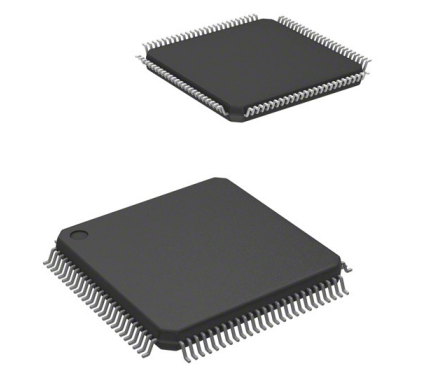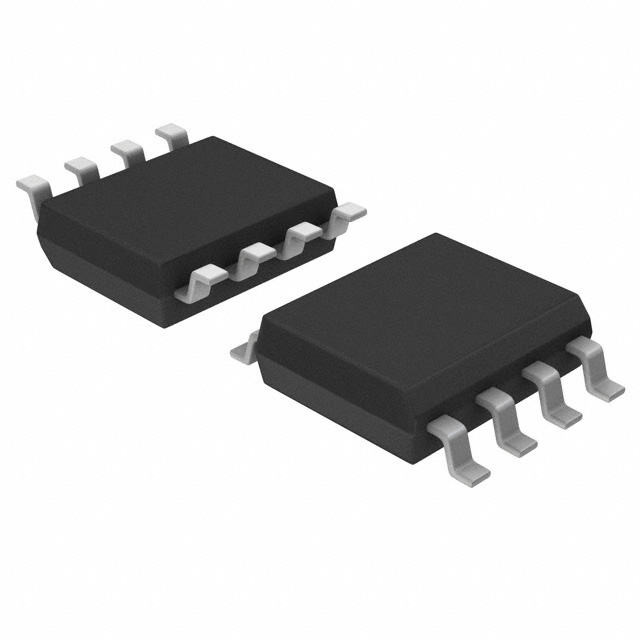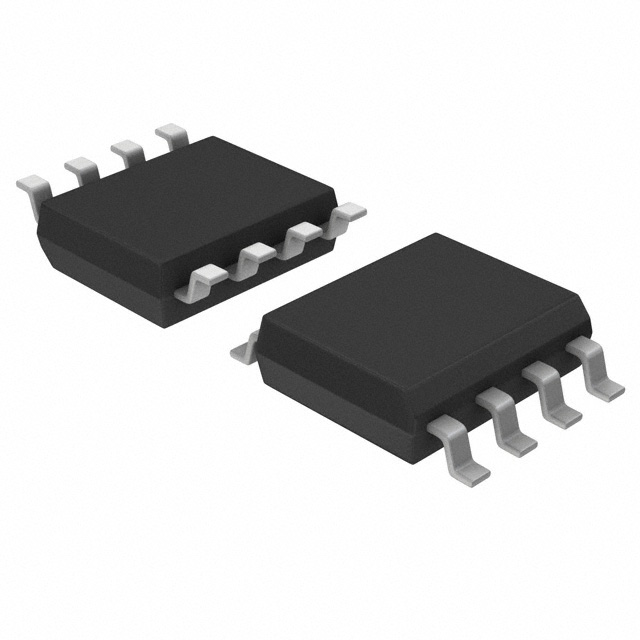
| Manufacturer Part#: | LM3S9B90-IQC80-C5 |
| Product Category: | Embedded - Microcontrollers |
| Manufacturer: | Texas Instruments |
| Description: | IC MCU 32BIT 256KB FLASH 100LQFP |
| Package: | LQFP-100 |
| Quantity: | 2320 PCS |
| Lead Free Status / RoHS Status: | Lead free / RoHS Compliant |
| one to seven days | |
| Click buy button to purchase: | Buy |
CAD Models
![]()
LM3S9B90-IQC80-C5 Symbol
![]()
LM3S9B90-IQC80-C5 Footprint
Product Attributes
Manufacturer: | TI |
Product Category: | Embedded - Microcontrollers |
Product: | MCU |
Series: | Stellaris® ARM® Cortex®-M3S 9000 |
Family Name: | Stellaris |
EU RoHS: | Compliant |
Mounting Style: | SMD/SMT |
Mounting Type: | Surface Mount |
ADC Resolution: | 10 bit |
Analog Comparators: | 3 |
Address Bus Width: | 0.0 |
External Data Bus Width: | 0.0 |
Base Part Number: | LM3S9B90 |
Brand: | Texas Instruments |
Bit Size: | 32 |
Connectivity: | CAN, EBI/EMI, Ethernet, I2C, IrDA, LIN, Microwire, SPI, SSI, UART/USART, USB OTG |
Core Size: | 32-Bit |
Core Processor: | ARM® Cortex®-M3 |
CAN: | 2 |
Data Bus Width: | 32 bit |
Data Converters: | A/D 16x10b |
Data RAM Size: | 96 kB |
Data RAM Type: | SRAM |
Ethernet: | 1 |
Interface Type: | I2C, SPI, UART |
Instruction Set Architecture: | RISC |
JESD-30 Code: | S-PQFP-G100 |
Lead Shape: | Gull-wing |
Maximum CPU Frequency: | 80 MHz |
Maximum Clock Rate: | 80 MHz |
Maximum Operating Temperature: | + 85 °C |
Minimum Operating Temperature: | - 40 °C |
Maximum Processing Temperature: | 260 °C |
Maximum Supply Voltage: | 3.6 V |
Minimum Supply Voltage: | 1.08 V |
Microprocessor/Microcontroller/Peripheral IC Type: | MICROCONTROLLER, RISC |
I/O Voltage: | 3.3 V |
MSL Level: | 3 |
Number of I/Os: | 60 |
Number of Programmable I/O: | 60 |
Number of A/D Converters: | 2 |
Number of Bits: | 10 |
Number of ADC Channels: | 16 |
Number of UART Channels: | 3 |
Number of Timers/Counters: | 4 |
Number of Terminals: | 100 |
On-Chip ADC: | 2(16-chx10-bit) |
Oscillator Type: | Internal |
Packaging: | Tray |
Package / Case: | 100-LQFP |
Mfr Package Description: | 1.40 MM, GREEN, MS-026BED, LQFP-100 |
Package Body Material: | PLASTIC/EPOXY |
Package Code: | LFQFP |
Package Equivalence Code: | QFP100,.63SQ,20 |
Package Shape: | SQUARE |
Package Style: | FLATPACK, LOW PROFILE, FINE PITCH |
Peak Reflow Temperature (Cel): | 260 |
Power Supplies: | 1.2,3.3 |
PCB changed: | 100 |
Peripherals: | Brown-out Detect/Reset, DMA, I2S, POR, PWM, WDT |
Pin Count: | 100 |
Program Memory Type: | FLASH |
Program Memory Size: | 256KB (256K x 8) |
Processor Series: | Stellaris |
Product Type: | ARM Microcontrollers - MCU |
Product Dimensions: | 14.2 x 14.2 x 1.45 mm |
Length: | 14.2 mm |
Width: | 14.2 mm |
Height: | 1.45 mm |
Programmability: | Yes |
PWM: | 8 |
RAM (bytes): | 98304.0 |
ROM Programmability: | FLASH |
ROM (words): | 262144 |
Seated Height-Max: | 1.6 mm |
Screening Level: | Industrial |
Subcategory: | Microcontrollers - MCU |
Supplier Device Package: | 100-LQFP (14x14) |
Speed: | 80 MHz |
Technology: | CMOS |
Temperature Grade: | INDUSTRIAL |
Terminal Form: | GULL WING |
Terminal Pitch: | 0.5 mm |
Terminal Position: | QUAD |
Time@Peak Reflow Temperature-Max (s): | NOT SPECIFIED |
CNHTS: | 8542319000 |
HTS Code: | 8542310001 |
TARIC: | 8542319000 |
Unit Weight: | 0.046530 oz |
UART: | 3 |
USB: | 1 |
Watchdog: | 2 |
Features
◆ ARM Cortex-M3 Processor Core
● 80-MHz operation; 100 DMIPS performance
● ARM Cortex SysTick Timer
● Nested Vectored Interrupt Controller (NVIC)
◆ On-Chip Memory
● 256 KB single-cycle Flash memory up to 50 MHz; a prefetch buffer improves performance above 50 MHz
● 96 KB single-cycle SRAM
● Internal ROM loaded with StellarisWare® software
◆ External Peripheral Interface (EPI)
● 8/16/32-bit dedicated parallel bus for external peripherals
● Supports SDRAM, SRAM/Flash memory, FPGAs, CPLDs
◆ Advanced Serial Integration
● 10/100 Ethernet MAC and PHY
● Two CAN 2.0 A/B controllers
● USB 2.0 OTG/Host/Device
● Three UARTs with IrDA and ISO 7816 support (one UART with full modem controls)
● Two I2C modules
● Two Synchronous Serial Interface modules (SSI)
● Integrated Interchip Sound (I2S) module
◆ System Integration
● Direct Memory Access Controller (DMA)
● System control and clocks including on-chip precision 16-MHz oscillator
● Four 32-bit timers (up to eight 16-bit)
● Eight Capture Compare PWM pins (CCP)
● Lower-power battery-backed hibernation module
● Real-Time Clock in Hibernation module
● Two Watchdog Timers
● Up to 60 GPIOs, depending on configuration
◆ Analog
● Two 10-bit Analog-to-Digital Converters (ADC) with 16 analog input channels and a sample rate of one million samples/second
● Three analog comparators
● 16 digital comparators
● On-chip voltage regulator
◆ JTAG and ARM Serial Wire Debug (SWD)
◆ 100-pin LQFP and 108-ball BGA package
◆ Industrial (-40°C to 85°C) Temperature Range
Architectural Overview
Texas Instruments is the industry leader in bringing 32-bit capabilities and the full benefits of ARM® Cortex™-M3-based microcontrollers to the broadest reach of the microcontroller market. For current users of 8- and 16-bit MCUs, Stellaris® with Cortex-M3 offers a direct path to the strongest ecosystem of development tools, software and knowledge in the industry. Designers who migrate to Stellaris benefit from great tools, small code footprint and outstanding performance. Even more important, designers can enter the ARM ecosystem with full confidence in a compatible roadmap from $1 to 1 GHz. For users of current 32-bit MCUs, the Stellaris family offers the industry’s first implementation of Cortex-M3 and the Thumb-2 instruction set. With blazingly-fast responsiveness, Thumb-2 technology combines both 16-bit and 32-bit instructions to deliver the best balance of code density and performance. Thumb-2 uses 26 percent less memory than pure 32-bit code to reduce system cost while delivering 25 percent better performance. The Texas Instruments Stellaris family of microcontrollers—the first ARM Cortex-M3 based controllers—brings high-performance 32-bit computing to cost-sensitive embedded microcontroller applications. These pioneering parts deliver customers 32-bit performance at a cost equivalent to legacy 8- and 16-bit devices, all in a package with a small footprint.
Advantages and Disadvantages
There is no relevant information available for this part yet.
Applications
There is no relevant information available for this part yet.
Compliance
Lead Free | Contains Lead |
Radiation Hardening | No |
RoHS | Compliant |
ECCN / UNSPSC
Description | Value |
ECCN | 3A991.A.2 |
HTSN | 8542310001 |
SCHEDULE B | 8542310000 |
Environmental & Export Classifications
Lead Free Status / RoHS Status | Lead free / RoHS Compliant |
Moisture Sensitivity Level(MSL) | 3(168 Hours) |
Documents & Media
Introduction to Purchasing
Stock: 2320 Can Ship Immediately.
![]() Kynix Semiconductor Limited is one of the largest electronic component distributor in China.
Kynix Semiconductor Limited is one of the largest electronic component distributor in China.
The company was founded in 2008.
Goal: Strive to be the leading electronic component distributor of this industry and become the first one in the world.
Advantages: Professional workshops and rigorous management system.
Business Philosophy: We gain credibility by adhering to our commitments, displaying honesty and integrity and reaching company goals solely through honourable conduct.
Product Manufacturer
Texas Instruments Inc. (TI) is an American technology company that designs and manufactures semiconductors and various integrated circuits, which it sells to electronics designers and manufacturers globally. Its headquarters are in Dallas, Texas, United States. TI is one of the top ten semiconductor companies worldwide, based on sales volume. Texas Instruments's focus is on developing analog chips and embedded processors, which accounts for more than 80% of their revenue. TI also produces TI digital light processing (DLP) technology and education technology products including calculators, microcontrollers and multi-core processors. To date, TI has more than 43,000 patents worldwide.
Texas Instruments emerged in 1951 after a reorganization of Geophysical Service Incorporated, a company founded in 1930 that manufactured equipment for use in the seismic industry, as well as defense electronics. TI produced the world's first commercial silicon transistor in 1954, and designed and manufactured the first transistor radio in 1954. Jack Kilby invented the integrated circuit in 1958 while working at TI's Central Research Labs. TI also invented the hand-held calculator in 1967, and introduced the first single-chip microcontroller (MCU) in 1970, which combined all the elements of computing onto one piece of silicon.
In 1987, TI invented the digital light processing device (also known as the DLP chip), which serves as the foundation for the company's award-winning DLP technology and DLP Cinema. In 1990, TI came out with the popular TI-81 calculator which made them a leader in the graphing calculator industry. In 1997, its defense business was sold to Raytheon, which allowed TI to strengthen its focus on digital solutions. After the acquisition of National Semiconductor in 2011, the company had a combined portfolio of nearly 45,000 analog products and customer design tools, making it the world's largest maker of analog technology components.
Product Range
Amplifiers | Audio | Microcontrollers |
Clock & timing | Motor drivers | Power management |
Data converters | DLP® products | Die & wafer services |
Processors | RF & microwave | Space & harsh environment |
Interface | Sensors | Switches & multiplexers |
Isolation | Logic | Wireless connectivity |
Distributors
Distributors | Stock | Manufacturers | Descriptions |
Kynix | 2320 | TI | IC MCU 32BIT 256KB FLASH 100LQFP |
DigiKey | 0 | Texas Instruments | IC MCU 32BIT 256KB FLASH 100LQFP |
Mouser | 0 | Texas Instruments | ARM Microcontrollers - MCU Stellaris Micro controller |
Avnet | 0 | Texas Instruments | MCU 32-bit Stellaris ARM Cortex M3 RISC 256KB Flash 1.3V/3.3V 100-Pin LQFP Tray |
Alternative Models
There is no relevant information available for this part yet.
Popularity by Region
![]()
LM3S9B90-IQC80-C5 Popularity by Region
Market Price Analysis
There is no relevant information available for this part yet.
 IC MCU 8BIT 1.75KB FLASH 8DFNS
IC MCU 8BIT 1.75KB FLASH 8DFNS IC MCU 8BIT 8KB FLASH 8SOIC
IC MCU 8BIT 8KB FLASH 8SOIC IC MCU 8BIT 4KB FLASH 8SOIC
IC MCU 8BIT 4KB FLASH 8SOIC